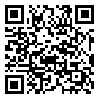BibTeX | RIS | EndNote | Medlars | ProCite | Reference Manager | RefWorks
Send citation to:
URL: http://rap.sanru.ac.ir/article-1-646-en.html
2- Standard and Research Center of Kohkiloueh and Bouyerahmad
The aim of this study was assestment of genetic diversity for honey bee populations in Kerman province using two inter simple sequence repeat (ISSR) primers. In this study, 30 samples from 6 populations (Kerman, Jiroft, Raein, Rabor, Bardsir and Flo) were collected. While using (AC)8G and (AGAC)4GC primers in PCR, DNA profiles of bees were found to possess 16 polymorphic fragments. The number of fragments produced in the DNA profiles of different bee cities varied from 2 to 8, with their sizes varying within 150-1000 bp. Means of Shanon Index based on (AC)8G marker for Jiroft, Kerman, Flo (Native bee of Jiroft) Rayen, Rabor and Bardsir honey bee population were 0.51, 0.36, 0.50, 0.61, 0.42 and 0.19 respectively and based on (AGAC)4GC marker in Jiroft, Kerman, Flo (Native bee of Jiroft) Rayen, Rabor and Bardsir honey bee population were 0.52, 0.51, 0.46, 0.39, 0.41 and 0.27 respectively. A cluster analysis was carried out using unweighed pair group method with arithmetic averages (UPGMA) and dendrogram illustrated genetic relationships among 30 individuals in six populations. Haplotypes were constructed computationally and frequencies were compared in each population. Based on all studied genetic criteria, we can conclude that honey bee populations in Kerman have moderate amount of genetic diversity. The results of this study can provide the basic molecular information for future research on native honey bees using ISSR markers.
| Rights and permissions | |
 |
This work is licensed under a Creative Commons Attribution-NonCommercial 4.0 International License. |



